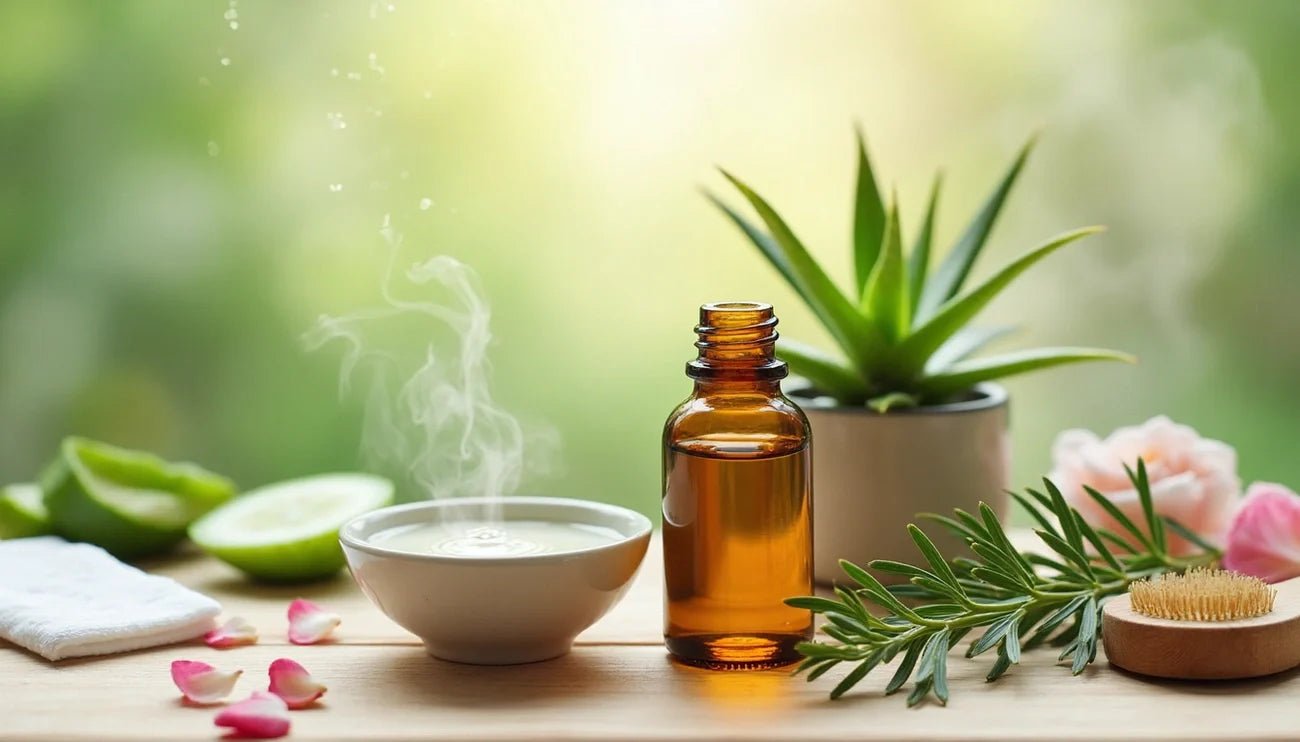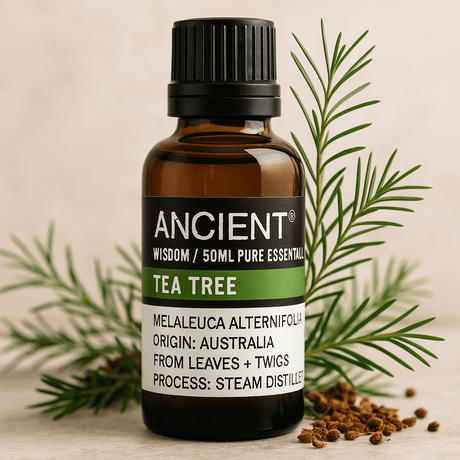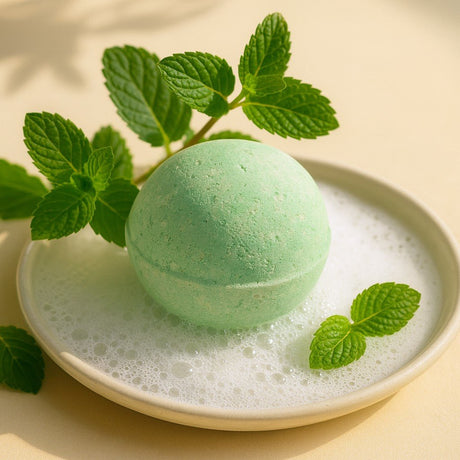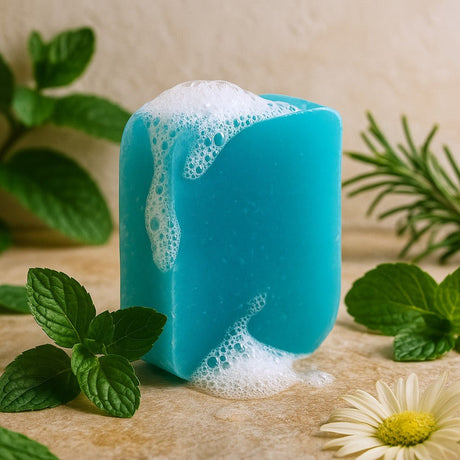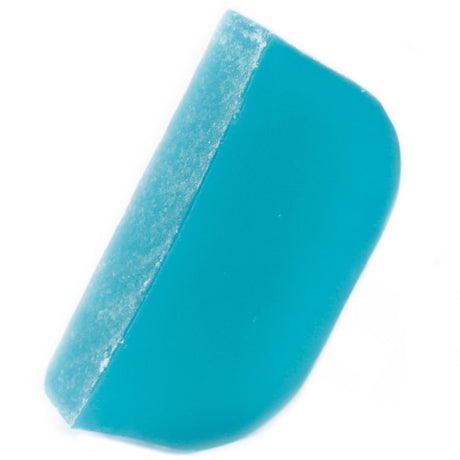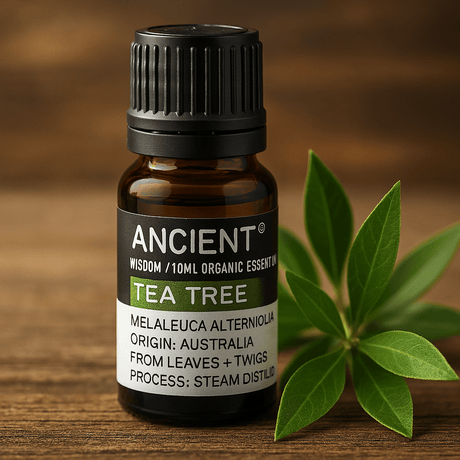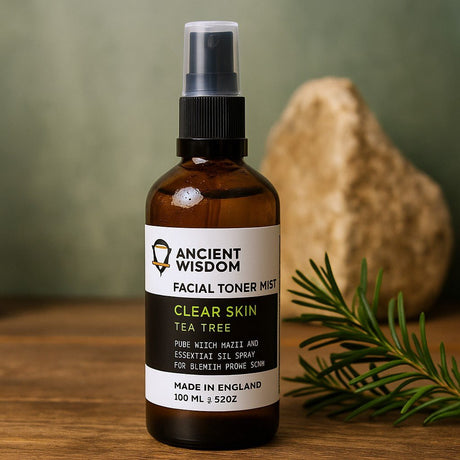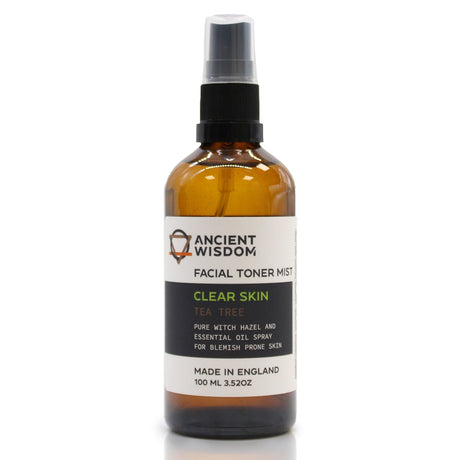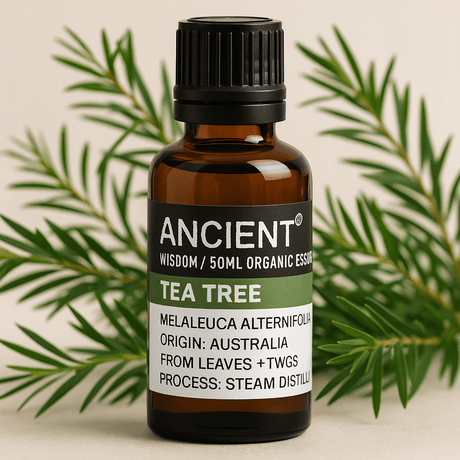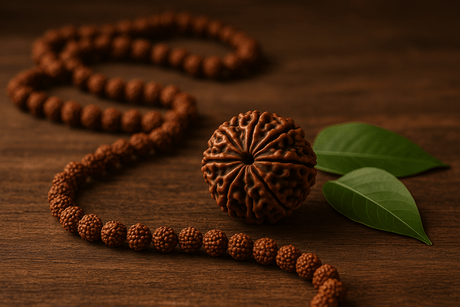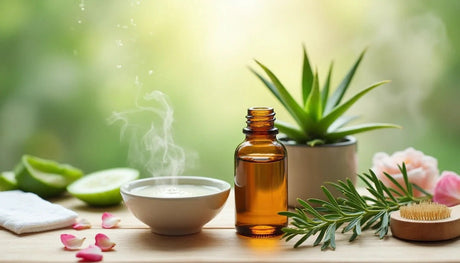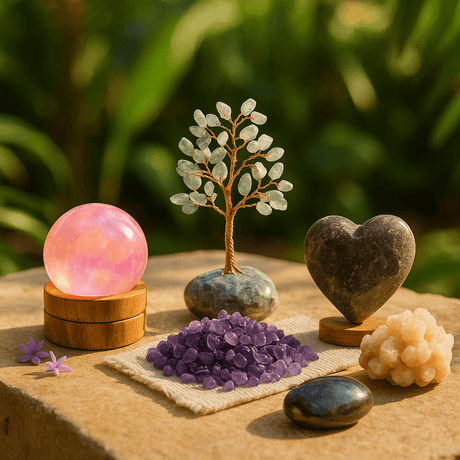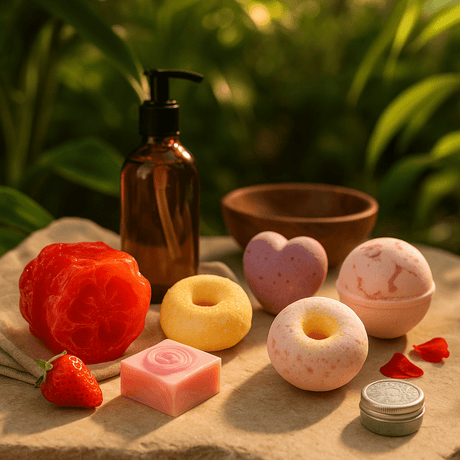How to Treat Acne Using Tea Tree Oil – Minimalist Tea tree oil can visibly reduce blemishes in just 7 days - a remarkable benefit that many don't know about.
The way this powerful natural extract works wonders for problematic skin has always amazed me. Aboriginal people of Australia have used tea tree oil as traditional medicine for centuries. They applied it directly to their skin for healing and treated various ailments with it. Research shows it works better than zinc oxide and clobetasone butyrate creams to treat eczema.
Tea tree oil's effects are remarkable. It fights blemishes and soothes dry skin by reducing itching and irritation. Lab studies reveal its ability to destroy common bacteria and viruses that cause illness. The oil doesn't just reduce bacterial activity - it completely eliminates them within 4-6 hours in laboratory conditions. These impressive skin benefits make tea tree oil a versatile addition to any natural skincare routine.
Let me show you how tea tree oil can enhance your skincare regimen. We'll look at everything from treating stubborn acne to soothing irritated skin. You'll learn the safe and effective ways to use this natural skincare powerhouse!
Understanding Tea Tree Oil and Its Natural Benefits
Tea tree oil is one of nature's most powerful skin remedies. This essential oil comes from the leaves of the Melaleuca alternifolia tree native to Australia. People have used it for centuries, and modern science backs up its effectiveness.
What does tea tree oil do for the skin?
Tea tree oil's skin benefits come from its three main properties: it fights microbes, fungi, and inflammation. These qualities make it great for many skin problems.
The oil works really well against acne. Research shows that applying it twice a day for 45 days reduces acne. It also helps with oily skin—a small 2016 study found that people's skin became less oily after using sunscreen with tea tree oil for just 30 days.
Tea tree oil does more than just fight acne. It calms irritated skin conditions and helps with itchy skin while reducing redness and swelling. Research shows it helps people who have skin reactions to nickel.
The oil speeds up wound healing too. A 2013 study showed that nine out of ten people healed faster when they used tea tree oil with regular wound treatment compared to regular treatment alone.
Key compounds and how they work
Tea tree oil's power comes from its complex chemistry. It contains more than 100 different compounds that make it work. The main ones are terpinen-4-ol, γ-terpinene, 1,8-cineole, α-terpinene, α-terpineol, p-cymene, and α-pinene.
Terpinen-4-ol is the star player here. It's the main compound that kills bacteria. In spite of that, research shows the smaller compounds are just as important for the oil to work.
The sort of thing I love about tea tree oil is how it works—it breaks down bacterial and fungal cell walls, which stops them from growing and multiplying. This targets common skin bacteria like Propionibacterium acnes and Staphylococcus aureus.
Why it's a popular natural remedy
Tea tree oil's popularity comes from several things. People love it because it's natural and gentler than many regular treatments. Most skin types handle it well, but you need to dilute it properly.
The oil is incredibly versatile. You can find it in face cleansers and hair products that help with acne, athlete's foot, nail fungus, and dandruff.
Tea tree oil shows up in many different products. You'll see it in ointments, mouthwashes, lotions, and skin care creams, usually at 5% strength, though some products are stronger.
Mix tea tree oil with a carrier oil or moisturizer before putting it on your skin. This reduces any chance of irritation while letting the oil do its job.
Targeting Common Skin Issues with Tea Tree Oil
Tea tree oil is nature's answer to stubborn acne and sensitive skin flare-ups. Let's look at how this versatile botanical remedy works on specific skin problems.
Acne and blemishes
Tea tree oil's antibacterial and anti-inflammatory properties are a great way to treat acne. It targets Propionibacterium acnes, the bacteria that causes breakouts, and eases inflammation and redness from blemishes.
You might wonder how well it works compared to regular treatments. Research shows that while tea tree oil isn't more effective than benzoyl peroxide (a common acne treatment), it causes fewer side effects like dryness and irritation. This makes it a great choice if you want a gentler solution for mild to moderate acne.
A cotton swab with diluted tea tree oil applied directly to blemishes gives the best results. The oil fights current breakouts and helps fade post-acne marks and surface scars over time.
Dry skin and eczema
Tea tree oil can help dry skin conditions, especially eczema, despite being known as a drying agent. It soothes irritated skin and prevents secondary infections that often make eczema worse.
Research from 2011 showed that tea tree oil applied to the skin worked better than zinc oxide and clobetasone butyrate creams to reduce eczema symptoms. Studies also show that tea tree oil contains terpinen-4-ol, which reduces inflammation.
Mix a few drops of tea tree oil with coconut or jojoba oil to treat dry skin or eczema. Put this mixture on affected areas right after showering while your skin is still damp to keep moisture in.
Oily skin and shine control
Too much oil production often blocks pores and causes breakouts. Tea tree oil helps control sebum production, which makes it useful for oily skin. A small study in 2016 found that people using sunscreen with tea tree oil for 30 days saw their skin become less oily.
Add a few drops of tea tree oil to your regular toner or moisturizer to control shine daily. You can also make a simple clay mask by mixing two drops of tea tree oil with bentonite clay – this pulls out excess oil without drying your skin.
Itchy or inflamed skin
Tea tree oil soothes itchy or inflamed skin really well because of its anti-inflammatory properties. Research proves it eases inflamed skin caused by nickel sensitivity. It also fights possible infections at the same time.
Mix tea tree oil with a carrier oil and apply it gently to affected areas several times a day for quick relief. You'll feel an instant cooling effect while the active compounds reduce inflammation at its source.
Psoriasis and sensitive skinTea tree oil offers promising relief for people with psoriasis—a condition affecting 3% of U.S. adults
Tea tree oil offers promising relief for people with psoriasis—a condition affecting 3% of U.S. adults. Its strong anti-inflammatory properties can help control discomfort from the dry, itchy patches this condition causes.
Always do a patch test before using tea tree oil on psoriatic or sensitive skin. Mix two drops of tea tree oil with two tablespoons of almond oil, put it on a small area without psoriasis, cover it with a bandage, and watch for any reaction.
Tea tree oil works well on scalp psoriasis. After patch testing, mix it with shampoo (two drops of oil for every two tablespoons of shampoo) and leave it on for 10-15 minutes before rinsing to ease inflammation and thick scale.
Healing and Protection: Cuts, Infections, and More
Tea tree oil does more than just improve your skin - it helps heal wounds and fights infections too. This versatile oil's natural antiseptic properties make it a must-have for both your first-aid kit and beauty cabinet.
Using tea tree oil for wound care
Tea tree oil makes cuts and scrapes heal better. It targets Staphylococcus aureus and other bacteria that often cause infections in open wounds. A small study revealed amazing results: all but one of the participants who used tea tree oil with their regular treatment healed faster than those who stuck to conventional methods alone.
Here's a simple blend to treat minor cuts and scrapes:
- Clean the wound with soap and water
- Mix one drop of tea tree oil with one teaspoon of coconut oil
- Put a small amount on the injured area
- Cover it with a bandage
- Do this once or twice daily until you see a scab
- This simple routine helps prevent infection and speeds up healing thanks to tea tree oil's antibacterial, antifungal, and antioxidant properties.
Preventing bacterial and fungal infections
Tea tree oil's protective benefits go beyond just healing wounds. Lab research shows it works against many bacterial strains, including those that cause eye infections. Scientists found that tea tree oil reduced biofilm biomass by 30% to 70% - this is a big deal as it means the oil really works.
Years of research confirm that tea tree oil fights antibiotic-resistant bacteria, especially methicillin-resistant Staphylococcus aureus (MRSA). The oil damages bacterial and fungal cell walls, which stops them from growing and multiplying.
Tea tree oil benefits for nail fungus
Fungal nail infections usually show up on toenails and can be stubborn, but tea tree oil helps treat them. Research shows the oil reduces the growth of Trichophyton rubrum, a common fungus behind nail infections.
You'll need patience when treating nail fungus. Put up to three drops of pure tea tree oil on the affected nail or mix it with coconut oil. You could also soak your feet in warm water mixed with five drops of tea tree oil and a carrier oil.
Results take time, but they're worth the wait. A 1994 study found tea tree oil worked just as well as clotrimazole (a common antifungal medication) for treating fungal toenail infections. Your nails will need several months to heal as new healthy growth replaces the infected parts.
Beyond the Face: Hair, Scalp, and Hygiene Uses
Tea tree oil does more than just care for your face. This versatile oil is a great way to get amazing benefits for hair, scalp, and daily hygiene needs. The antimicrobial powerhouse makes everyday routines into therapeutic rituals that nourish both body and spirit.
Dandruff and scalp buildup
Does a flaky scalp bother you? Tea tree oil helps curb dandruff caused by the Malassezia fungus. This yeast-like organism disrupts your skin cell cycle and creates those pesky white flakes. Tea tree oil's potent antifungal properties target this root cause directly.
Research shows people using 5% tea tree oil shampoo daily for four weeks saw their mild to moderate dandruff decrease by 41%. Tea tree oil also unclogs hair follicles and boosts blood flow, which could lead to thicker, healthier hair.
Tea tree oil in shampoos and conditioners
Adding tea tree oil to your hair care routine is easier than you might think. A simple approach is to add 5-10 drops to your regular shampoo bottle and shake well before use. You can also make a hair mask by mixing:
- Avocado paste or yogurt base
- A spoonful of honey
- Several drops of tea tree oil
Let this mixture sit for 15-20 minutes before washing it out completely. To maintain healthy hair, mix tea tree oil with almond oil in a 1:10 ratio and use it daily.
Natural deodorant and body odor control
Here's something interesting - sweat doesn't actually smell. The odor comes from bacteria mixing with your perspiration.
You can make your own chemical-free deodorant by combining:
- Coconut oil (as a moisturizing base)
- Baking soda (neutralizes odor)
- Arrowroot powder or cornstarch (absorbs moisture)
- Tea tree oil (fights bacteria)
- Keep it in a cool place away from sunlight so it won't melt.
Mouthwash and oral care
Tea tree oil's antimicrobial properties boost oral health significantly. Research shows it reduces oral bacteria and inflammatory molecules, which helps treat gingivitis.
Making a simple mouthwash requires just one drop of tea tree oil in a cup of warm water. Mix it well and swish for 30 seconds. Remember - never swallow tea tree oil because it can be toxic if ingested.
A study of schoolchildren found tea tree oil mouthwash worked as well as chlorhexidine in reducing plaque and gingivitis. Unlike chlorhexidine, it didn't cause teeth discoloration.
How to Use Tea Tree Oil Safely and Effectively
You can utilize the full potential of tea tree oil with proper application techniques. Here's how to use this potent extract safely and get maximum benefits.
Dilution guidelines and carrier oils
Direct application of tea tree oil to your skin is unsafe—proper dilution remains crucial. Adults should mix 1-2 drops with 12 drops of carrier oil like coconut, jojoba, olive, or almond oil. This mixture creates a safe 3% maximum concentration. Children above six need more dilution—one drop per 60ml carrier oil.
Patch testing and allergy precautions
A patch test is essential before using tea tree oil:
- Apply a dime-sized amount of diluted oil to your forearm
- Cover with a bandage for 24 hours
- Rinse right away if you notice redness, itching, or swelling
- Studies show that 1.8% of people experience allergic reactions to tea tree oil. Products that are older or exposed to heat and light typically cause more reactions.
Choosing high-quality tea tree oil
Quality tea tree oil should have these characteristics:
- 100% pure essential oil (avoid "fragrance oils")
- Botanical name Melaleuca alternifolia clearly stated
- Dark glass bottle packaging to preserve potency
-
10-40% concentration of terpinen (the main antiseptic component)
10-40% concentration of terpinen (the main antiseptic component)
When to avoid or stop using it
Tea tree oil can be toxic if swallowed—never ingest it. Stop using it immediately if irritation develops. Pregnant women should only use it under medical supervision. The oil can harm pets, especially cats and dogs, so keep it away from them.
Conclusion
Tea tree oil is one of nature's most remarkable gifts for our skin and overall wellness. This piece shows how this powerful plant extract provides benefits that go way beyond simple skincare. Tea tree oil works with your body's natural processes to calm angry blemishes and soothe dry, irritated skin.
Tea tree oil's versatility amazes me most. This botanical powerhouse addresses multiple concerns at once, unlike synthetic products that target single issues. Its fresh, earthy aroma in your bathroom reminds us of its natural origins – a gentle whisper from the Australian landscape where indigenous people have valued it for centuries.
Note that potency requires respect. You should always dilute tea tree oil with carrier oils before application. This step turns a potentially irritating substance into a gentle healer that nourishes as it treats. Your skin needs this thoughtful approach.
Adding tea tree oil to your routine brings peace of mind. You choose a path that lines up with nature – one that values traditional wisdom while embracing modern understanding of plant healing.
Start introducing tea tree oil slowly into your self-care rituals. Watch how your skin responds and make changes as needed. Your body will tell you what works. Natural skincare builds a harmonious relationship with your skin rather than providing quick fixes.
When you next face a skincare challenge, reach for the small amber bottle of tea tree oil. Your skin will thank you with a quiet glow that comes from genuine health, not temporary cover-ups. This shows the true beauty of nature's remedies – gentle changes that honor your body's wisdom and the natural world.
FAQs
How should I incorporate tea tree oil into my skincare routine? Dilute tea tree oil with a carrier oil like coconut or jojoba oil before applying to your skin. You can add a few drops to your toner or moisturizer, or create a spot treatment for blemishes. Always do a patch test first and use it consistently for best results.
Can tea tree oil help with acne and oily skin? Yes, tea tree oil can be effective for acne and oily skin due to its antibacterial and anti-inflammatory properties. It helps reduce acne-causing bacteria and regulates sebum production. For best results, use a diluted form consistently as part of your skincare routine.
Is tea tree oil safe for all skin types? While tea tree oil can benefit many skin types, it's not suitable for everyone. Always dilute it properly and perform a patch test before use. People with sensitive skin or allergies should be cautious. If irritation occurs, discontinue use immediately.
Can tea tree oil be used for hair and scalp care? Yes, tea tree oil can be beneficial for hair and scalp health. It can help combat dandruff, unclog hair follicles, and promote healthier hair growth. Add a few drops to your shampoo or create a hair mask with tea tree oil for best results.
What are some other uses for tea tree oil beyond skincare? Tea tree oil has various uses beyond skincare. It can be used as a natural deodorant, added to mouthwash for oral care, and applied to nail fungus. It's also effective for minor wound care and preventing bacterial infections when properly diluted and applied.
